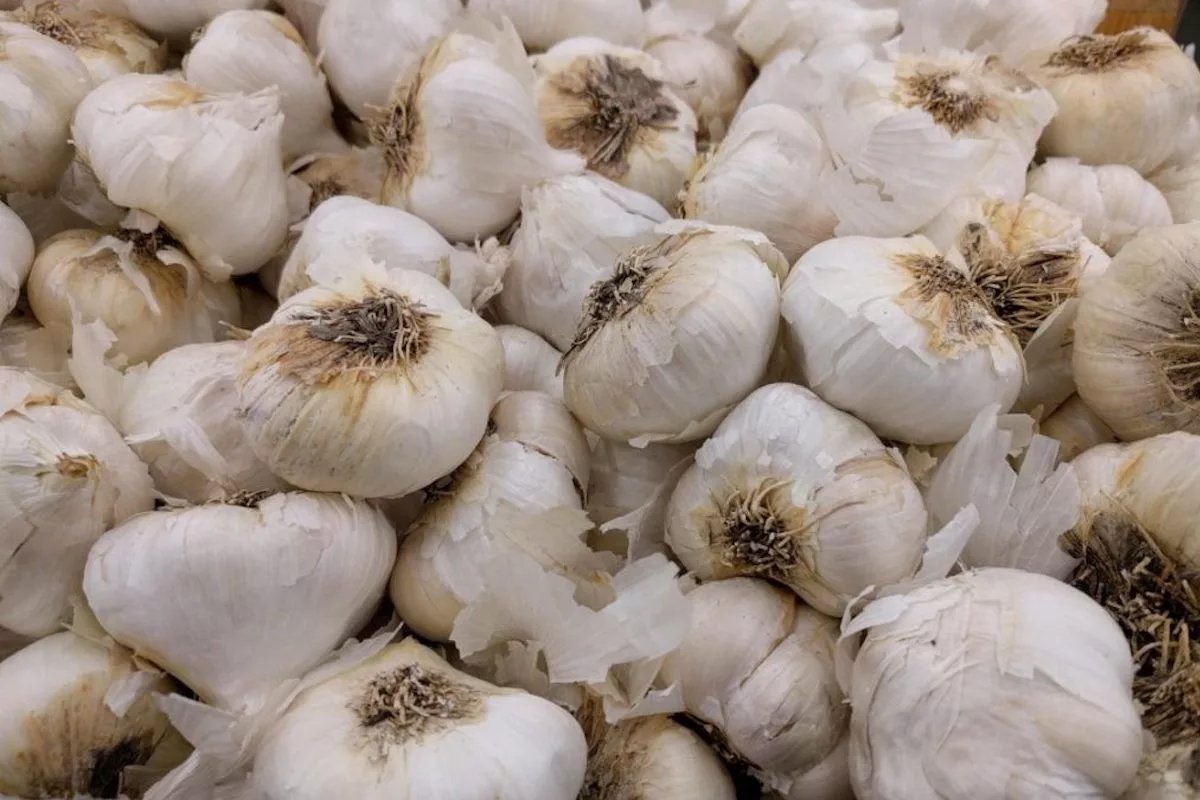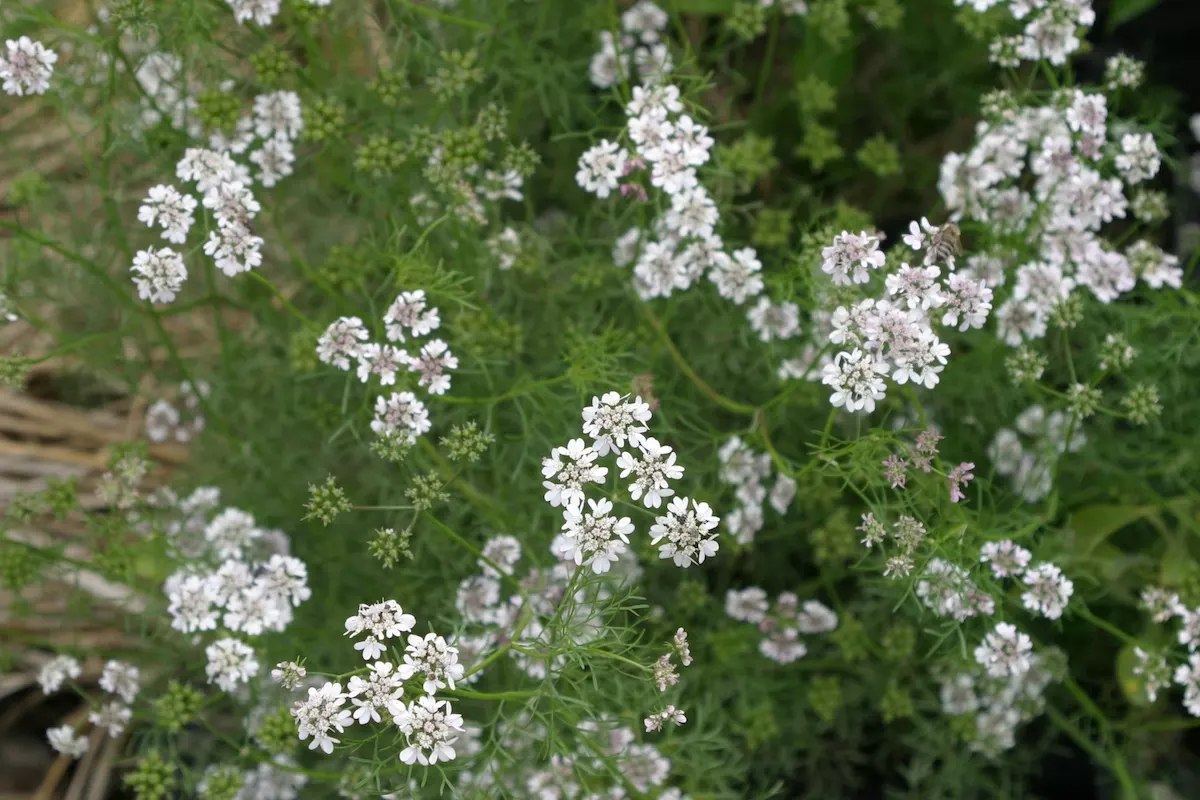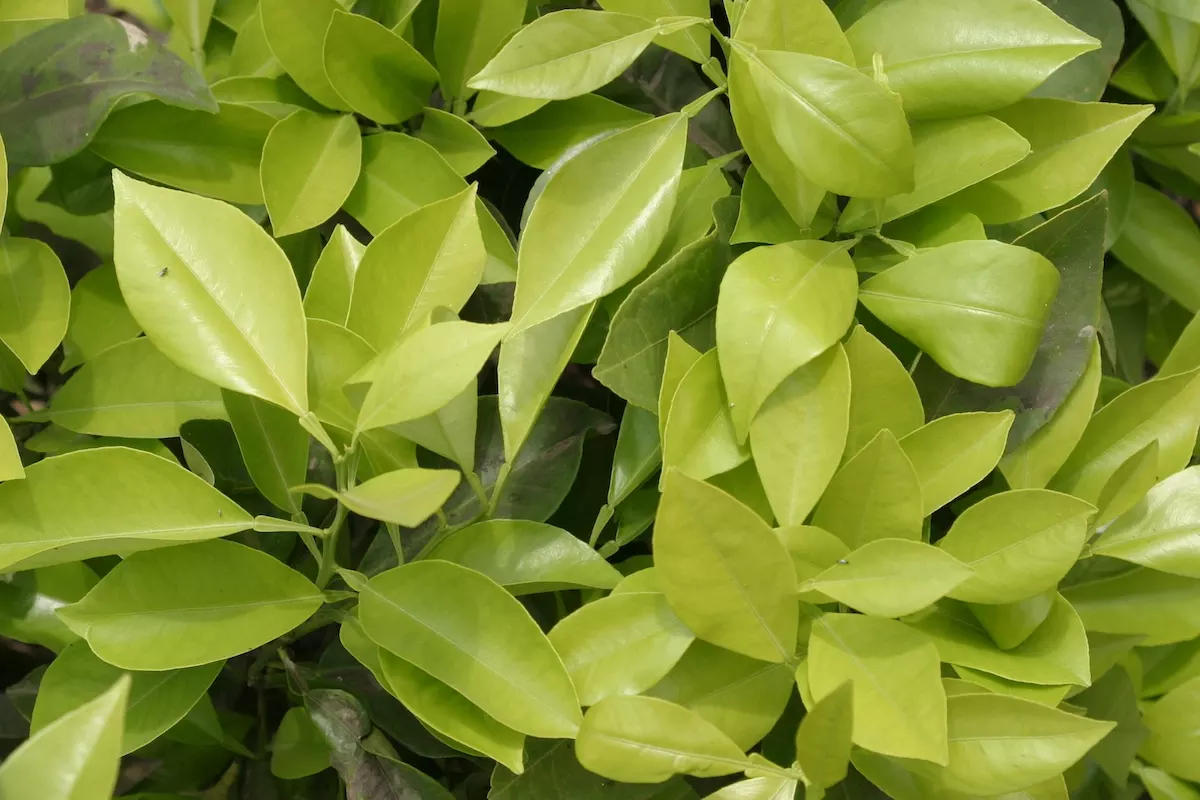
Petitgrain Bigarade oil
August 15, 2021
Onion oil
June 13, 2021
Garlic oil

Production Method
The oil is produced by steam distillation of the fresh crushed cloves of the Garlic bulb. A concrete is produced by solvent extraction (hexane) from the same.
Uses
In Perfumery, seldomly used in perfumery, if at all possibly for « effect » R&D purposes. In Flavors, a major oil for soups, flavoring “cubes”, meat, table sauces, dressings, “in seasoning blends, and in very small quantities in natural flavors, especially seafood.” Wright, J. “Flavor Creation” (2004). Garlic oil is often adulterated, if not straightforwardly presented as natural when it is in fact wholly « synthetic ». In Aromatherapy, “Garlic oil has obtained great popularity during the past [50] years, not only in terms of the increasing popularity of garlic itself, but also because of its therapeutic value in pharmaceutical preparations.” The oil offers interesting properties, among them “thyroid-stimulating, anti-platelet aggregating, hypotensive, anti-cholesterol, vermifuge, anti-infectious, [and to treat] hemogliasis and verminosis — contra-indication: external (dermocausticity).” (Franchomme, P.; Jollois, R.; Pénoël, D. “L’Aromathérapie Exactement” (2001).
Botanical Origin & Historiography
The word garlic derives from Old English, garlēac, meaning gar (spear) and leek, as a 'spear-shaped leek'. Identification of the wild progenitor of common garlic is difficult due to the sterility of its many cultivars, which limits the ability to cross test with wild relatives. Genetically and morphologically, garlic is most similar to the wild species Allium longicuspis, which grows in central and southwestern Asia. However, because A. longicuspis is also mostly sterile, it is doubtful that it is the ancestor of Allium sativum. Other candidates that have been suggested include A. tuncelianum, A. macrochaetum, and A. truncatum, all of which are native to the Middle East. The phytochemicals responsible for the sharp flavor of garlic are produced when the plant's cells are damaged. When a cell is broken by chopping, chewing, or crushing, enzymes stored in cell vacuoles trigger the breakdown of several sulfur-containing compounds stored in the cell fluids (cytosol). The resultant compounds are responsible for the sharp or hot taste and strong smell of garlic. Some of the compounds are unstable and continue to react over time. Among the members of the onion family, garlic has by far the highest concentrations of initial reaction products, making garlic much more potent than onion, shallot, or leeks. Although many humans enjoy the taste of garlic, these compounds are believed to have evolved as a defensive mechanism, deterring animals such as birds, insects, and worms from eating the plant. Because of this, people throughout history have used garlic to keep away pests such as mosquitoes and slugs. Garlic is widely used around the world for its pungent flavor as a seasoning or condiment. The use of garlic in Egypt dates back thousands of years. Well-preserved garlic was found in the tomb of Tutankhamun (c. 1325 BC). Egypt was a major supplier of garlic to the Romans which used to call it ‘stinking rose’ and their empire. Egypt remain today a major exporter of garlic to the EU. In his Natural History, Pliny gave a list of conditions in which garlic was considered beneficial. Galen, writing in the second century, eulogized garlic as the "rustic's theriac" (cure-all). Avicenna, the Persian polymath and father of medicine, in The Canon of Medicine (1025), recommended garlic for the treatment of arthritis, snake and insect bites, parasites, chronic cough, and as an antibiotic — the latter demonstrated in the modern use of garlic as an antibiotic and furthermore in high-cholesterol and cancer treatments.



